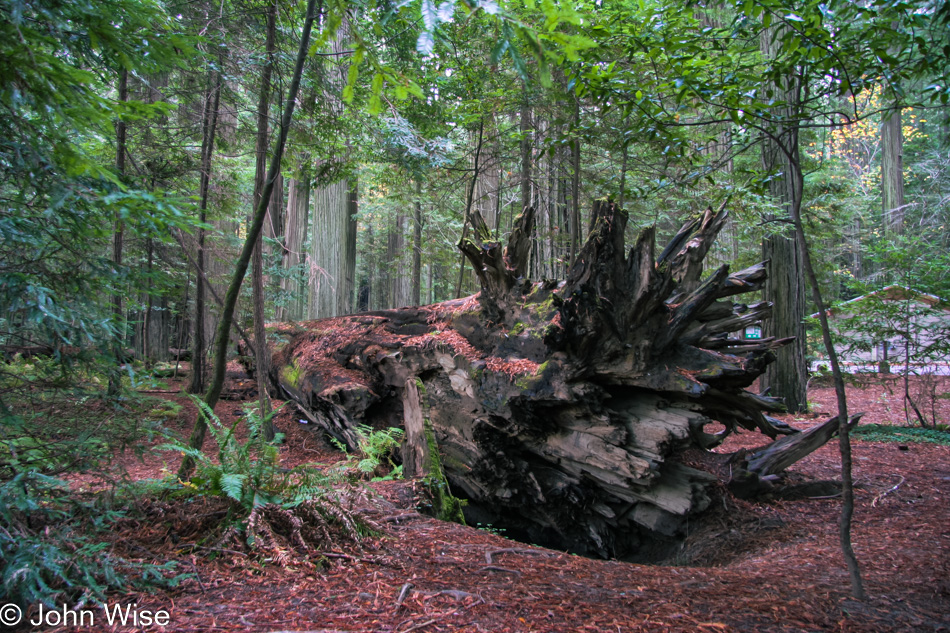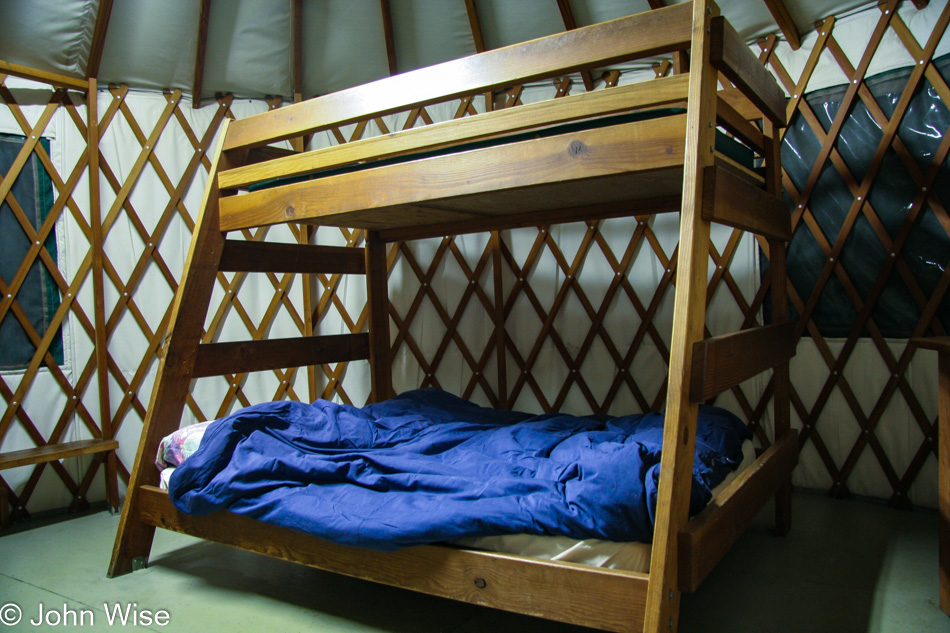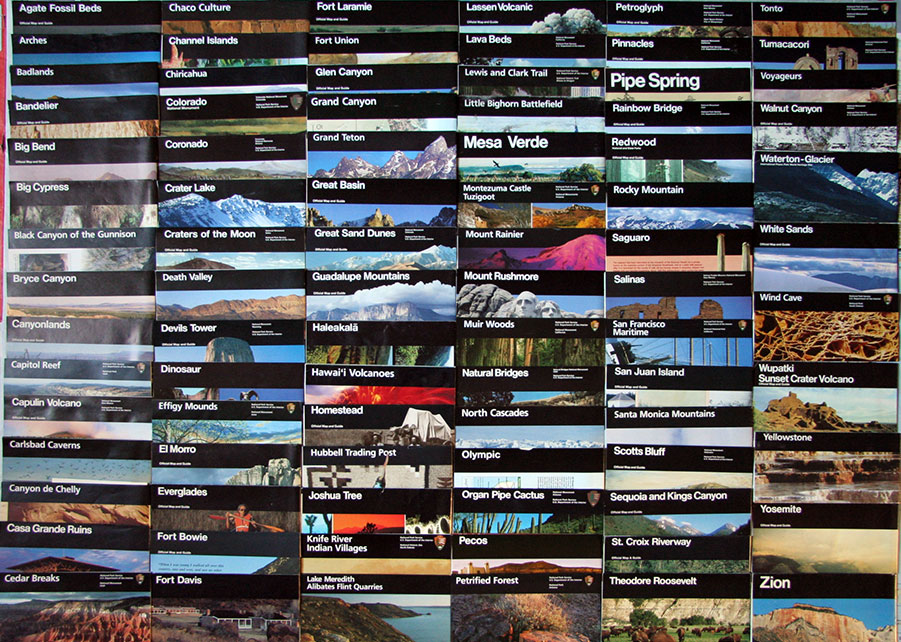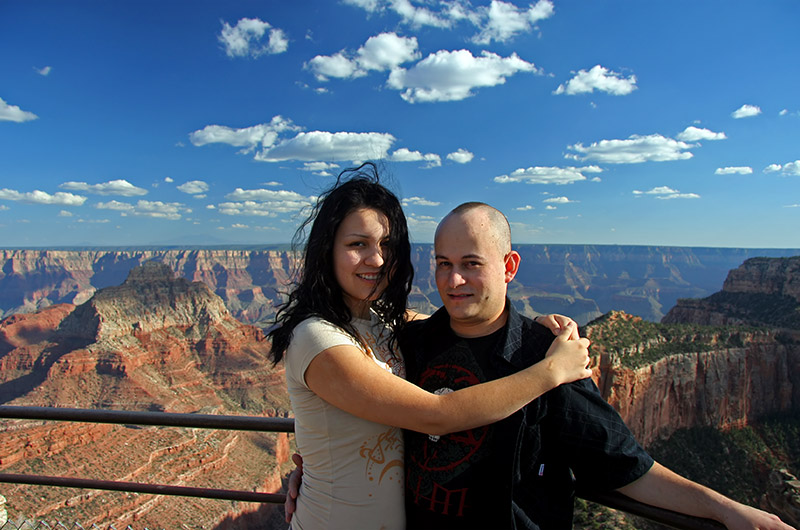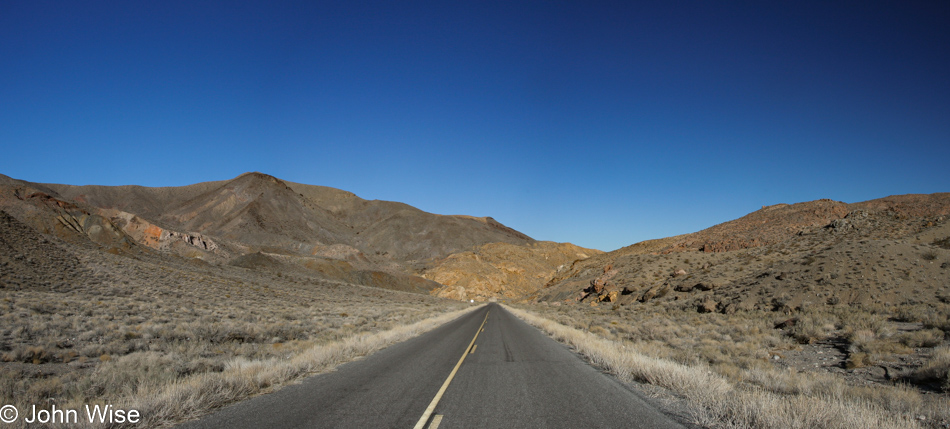
Not much death happening around here at this corner of Death Valley.
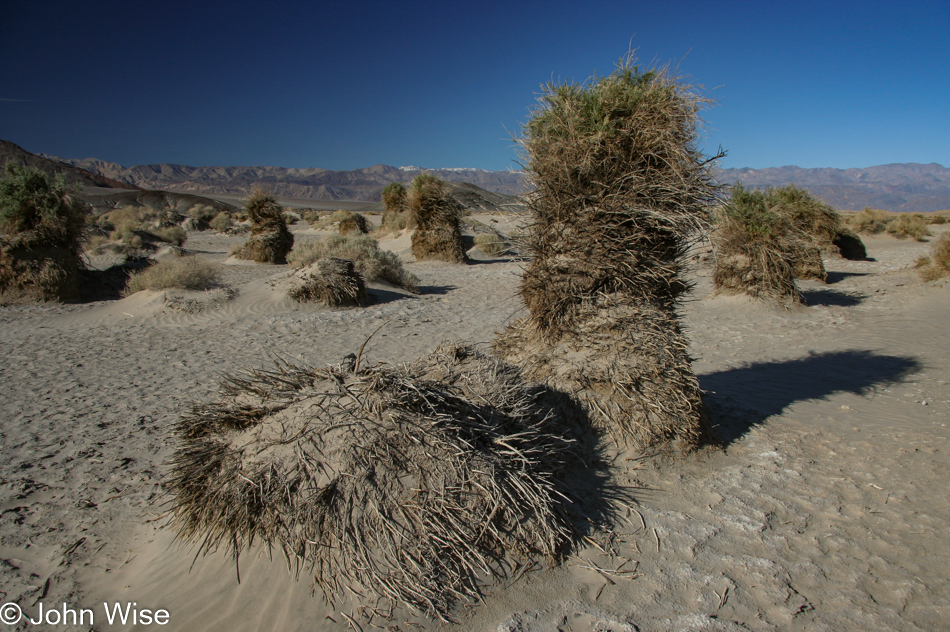
Just a bunch of life from what we can see. This is the Devil’s Cornfield, made up of clumps of soil weathered by aeolian winds with arrow weeds growing atop of them. What are Aeolian winds? From Wikipedia, I quote: “Aeolian processes, also spelled eolian, pertain to wind activity in the study of geology and weather and specifically to the wind’s ability to shape the surface of the Earth (or other planets). Winds may erode, transport, and deposit materials and are effective agents in regions with sparse vegetation, a lack of soil moisture, and a large supply of unconsolidated sediments. Although water is a much more powerful eroding force than wind, aeolian processes are important in arid environments such as deserts.”
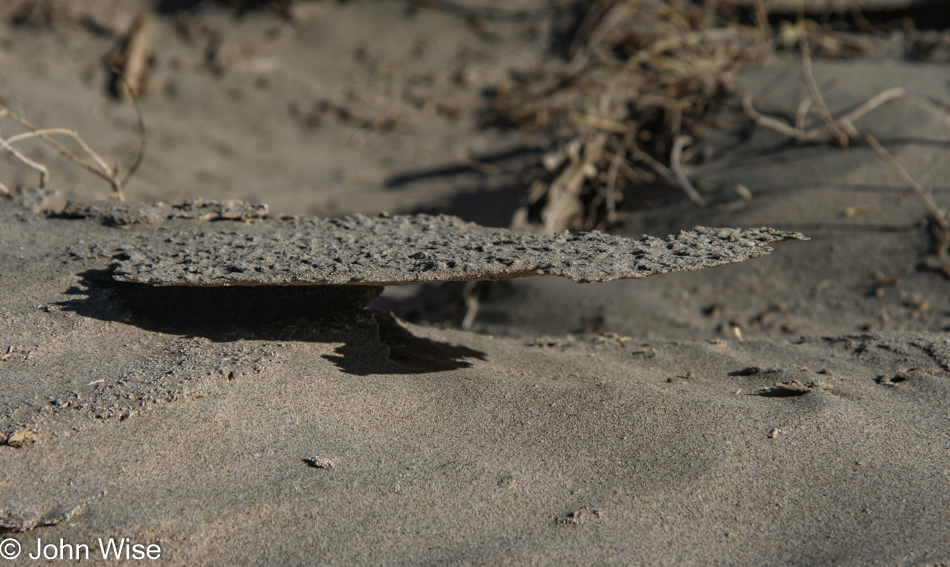
Proof that water can run pretty deep here when it does rain, or how does one explain this phenomenon?
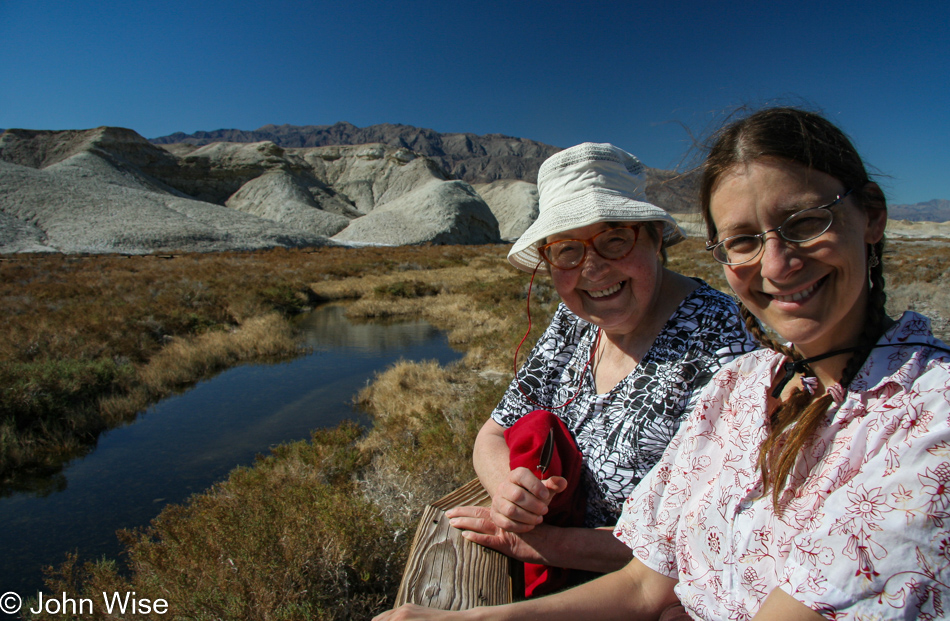
Living in Arizona, we have come to not see names of places as literals, such as Bloody Basin, which is not full of blood, and Big Bug Creek, well, maybe the big bugs are now extinct. So when you see Salt Creek on the map in Death Valley and everything tells you that this dryest of dry places is tough on life, who would ever expect to find Salt Creek flowing with water supporting a small marsh? Salt Creek turns out to be the remnant of Lake Manly, which 12,000 years ago during the Holocene was still a real lake before the area turned to desert. Amazingly, underneath all of this scorching desert lies one of the world’s largest aquifers, the legacy of Lake Manly. At Badwater Basin, one can see signs of the aquifer in the small areas covered by a thin layer of water.
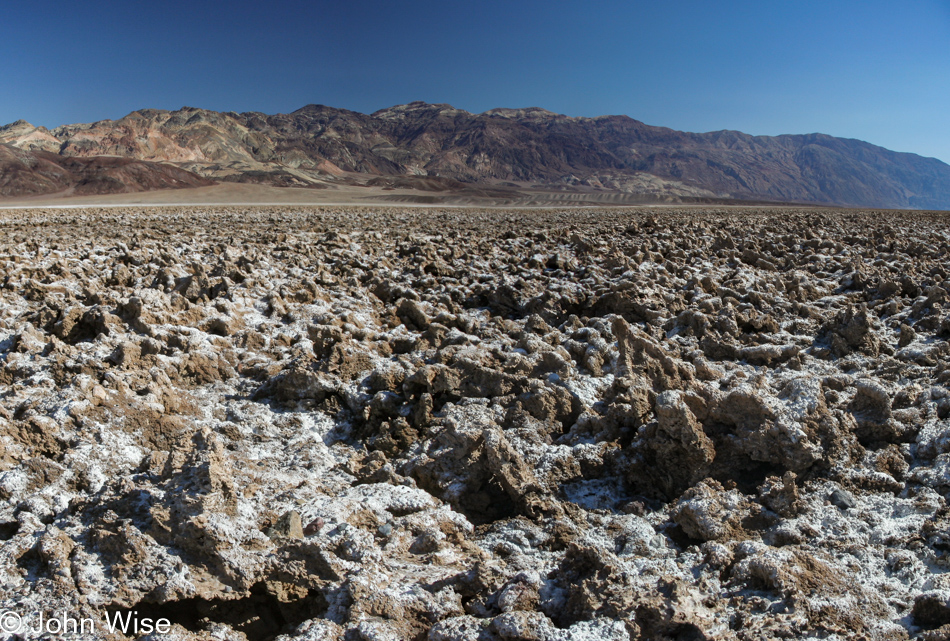
Not far from the Devil’s Cornfield, we are now visiting the Devils Golf Course.
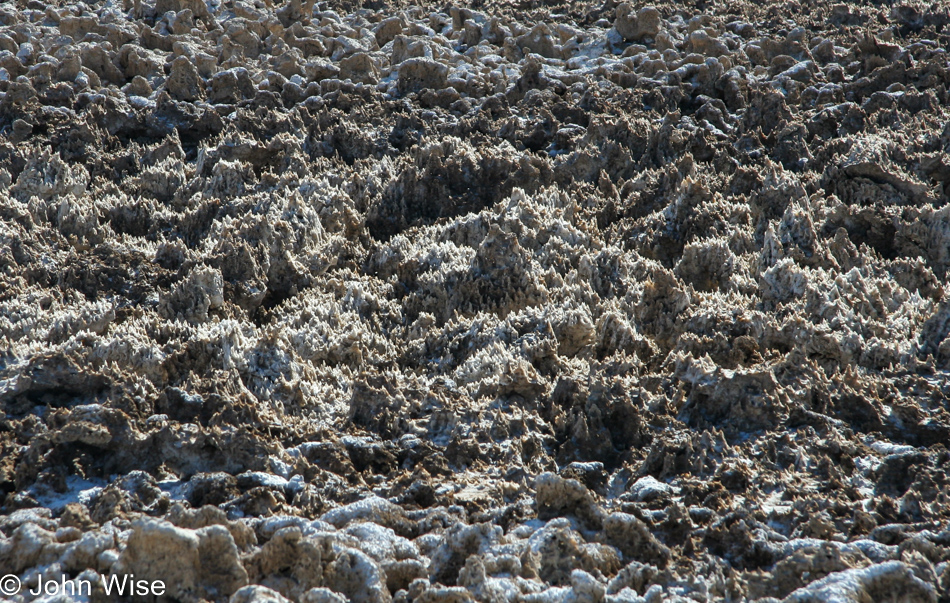
I’d venture that these are the petrified waveforms that froze in time back when the devil was playing golf and listening to whatever kind of music a devil listens to, probably AC/DC.
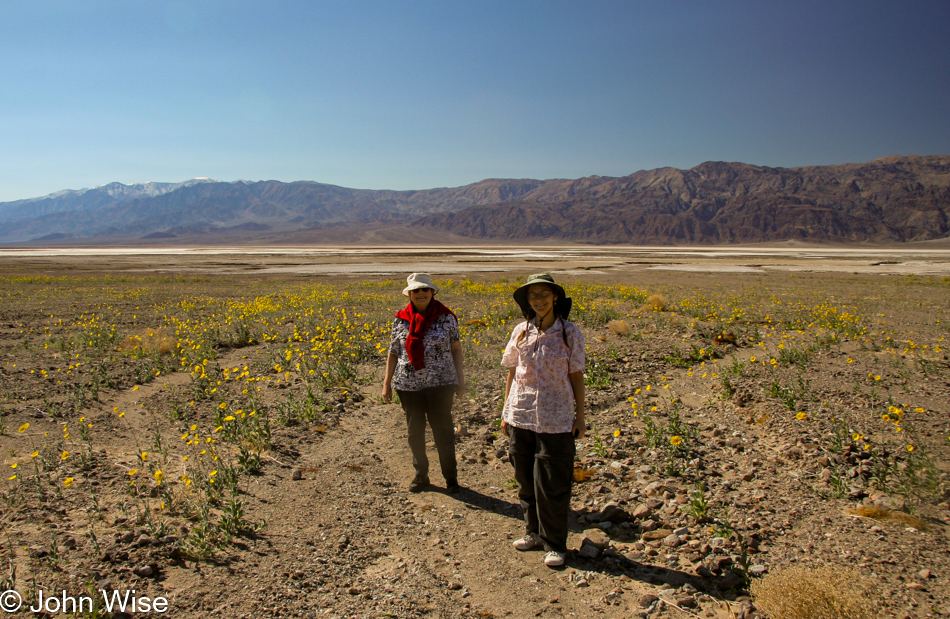
How lucky we are that on this particular weekend in this most inhospitable of landscapes known as Death Valley, we would find wildflowers in bloom.
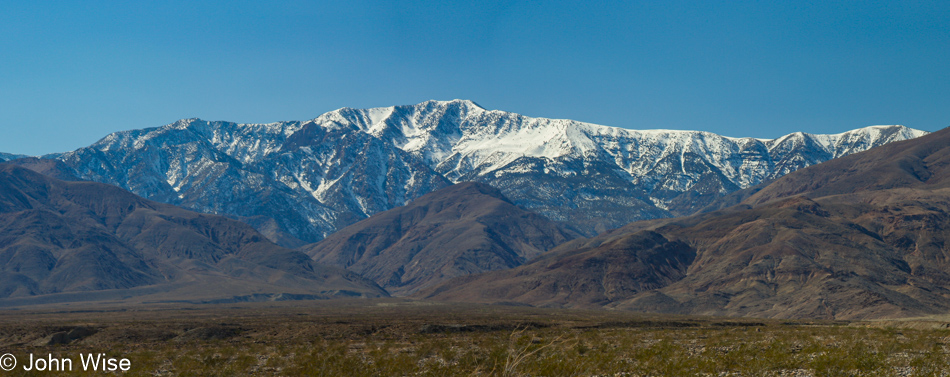
Sand, flowers, rocks, satan, and snow.
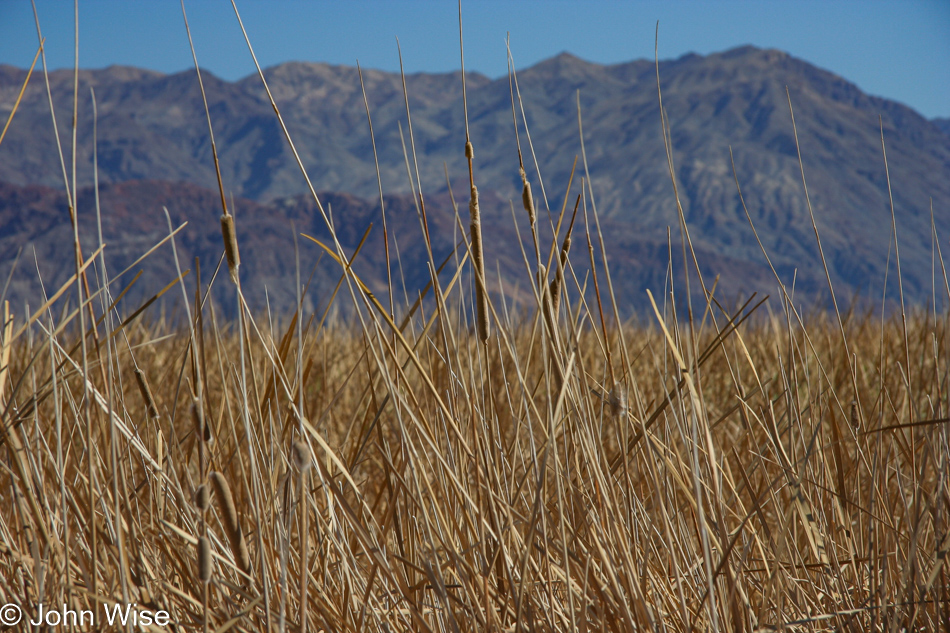
There seems to be more water flowing here in Death Valley than one would imagine.
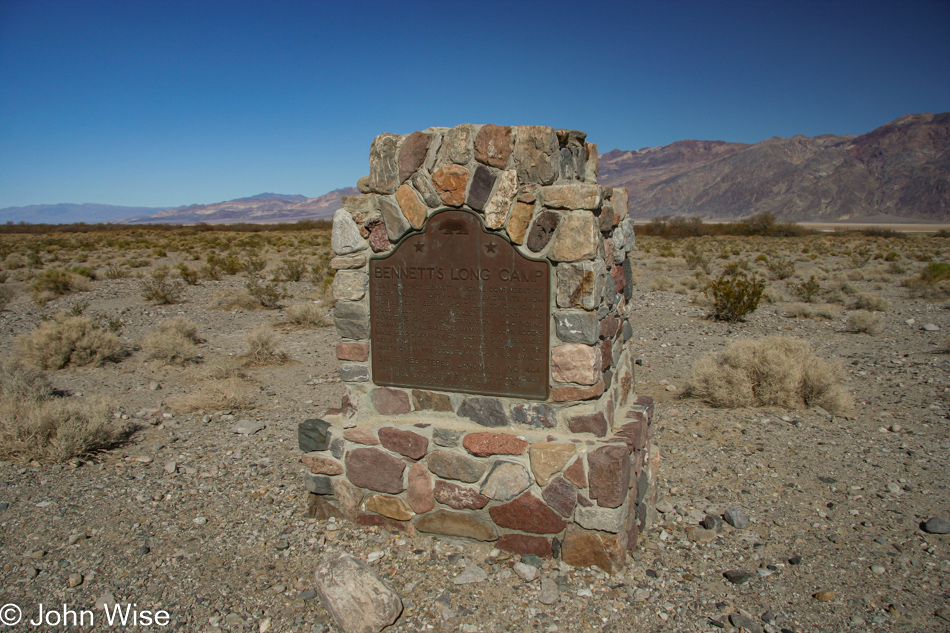
After taking a wrong turn here at the Bennetts Long Campsite many years ago, a group of people heading for California’s gold rush area was effectively trapped due to lack of water and navigating skills. While a person did walk about 250 miles looking for help, some of the party died here, hence the naming of the place that would become known as Death Valley.
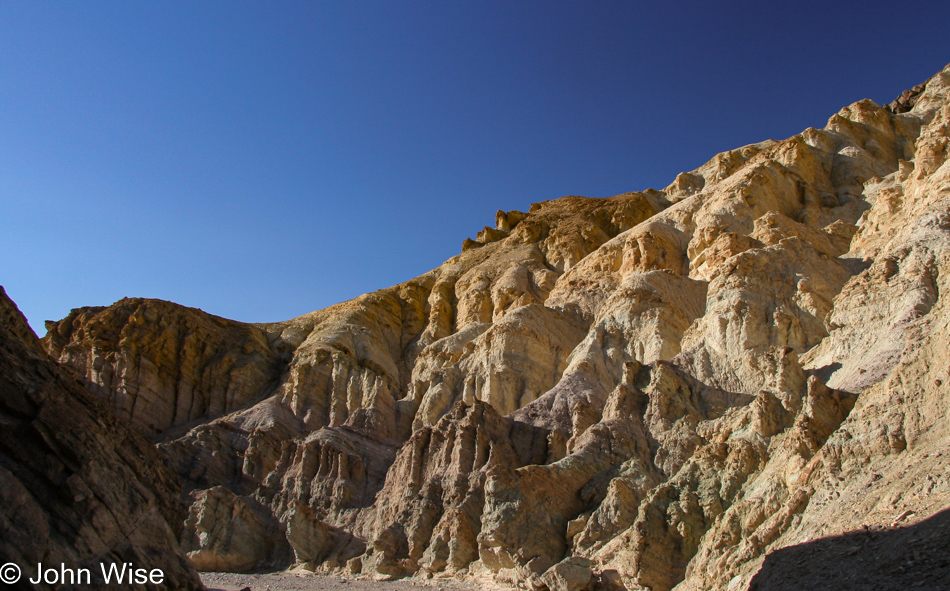
We explored a side canyon with a name that has been lost in time.
Update: In 2023, we took a hike up Golden Canyon, this is that canyon.
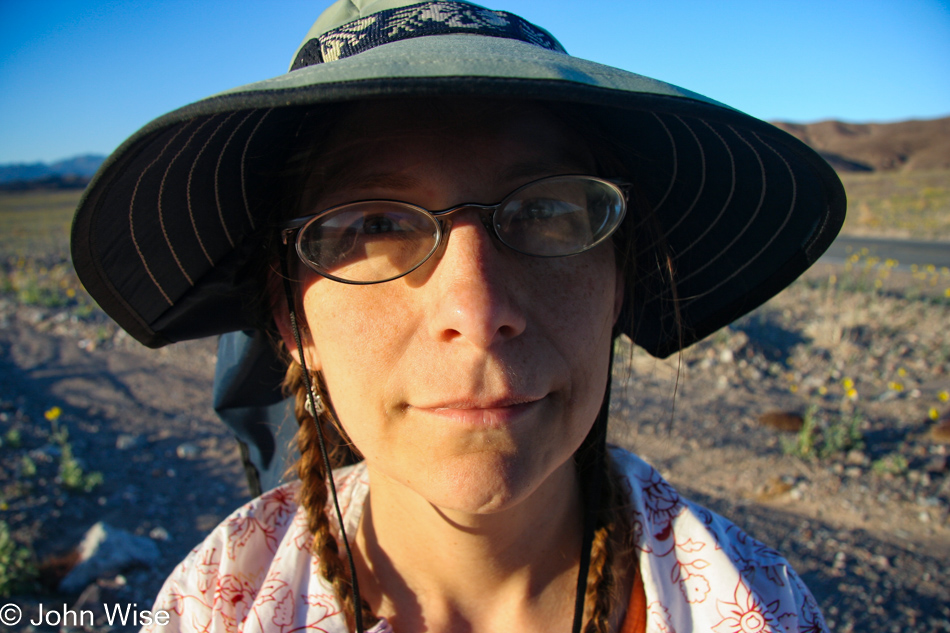
Does my wife have bird-like features, or is it just the weird camera angle?
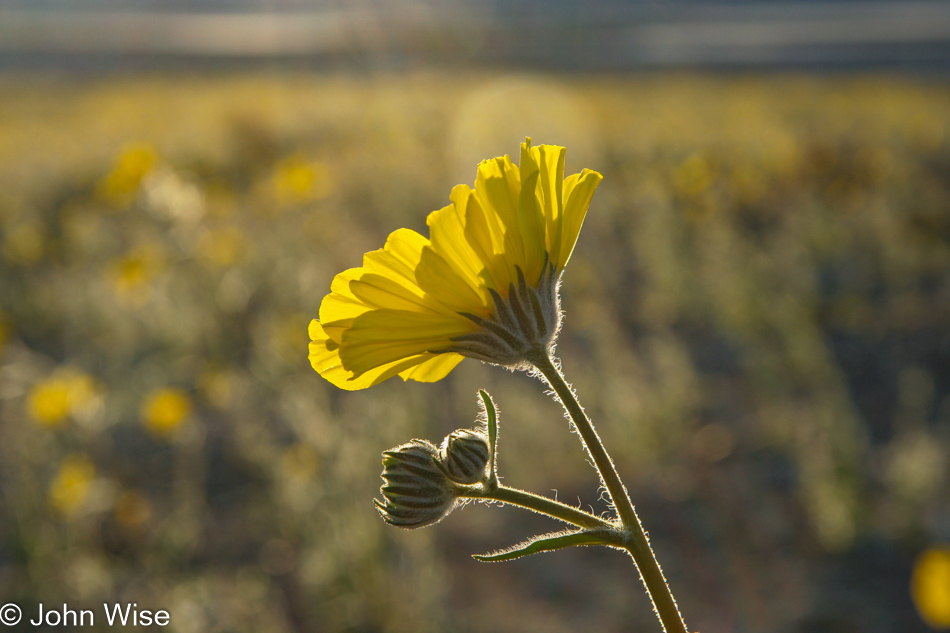
The sun is getting low, and soon, we’ll be overtaken by hunger. Better head for the exit.
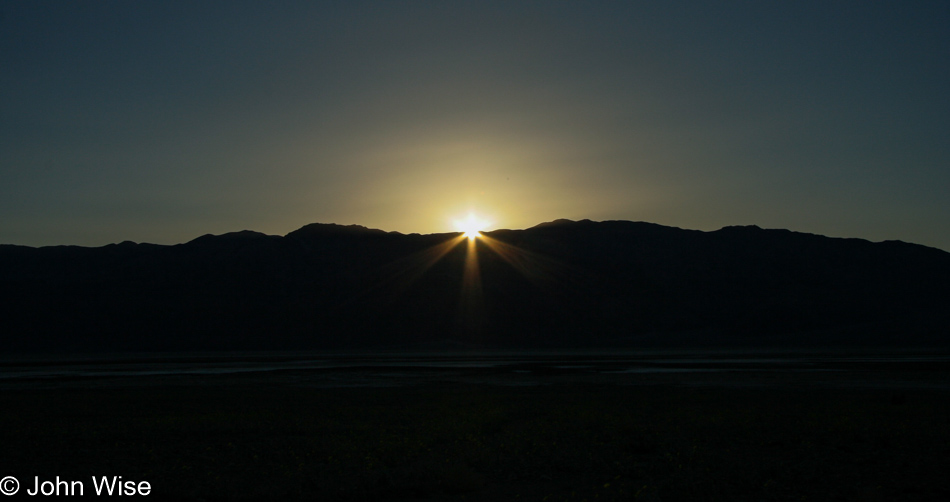
Tomorrow, we will take in the view from above.
